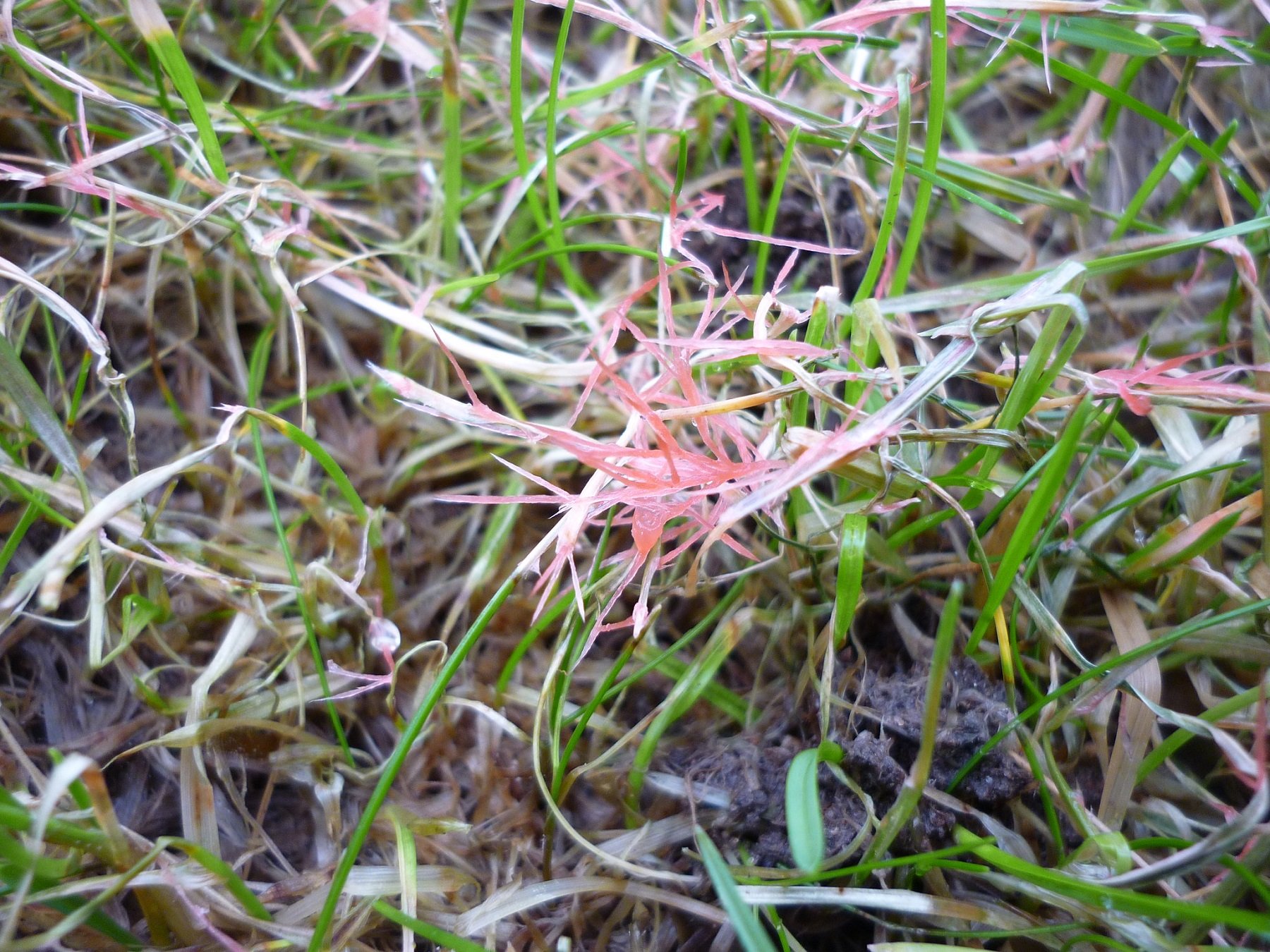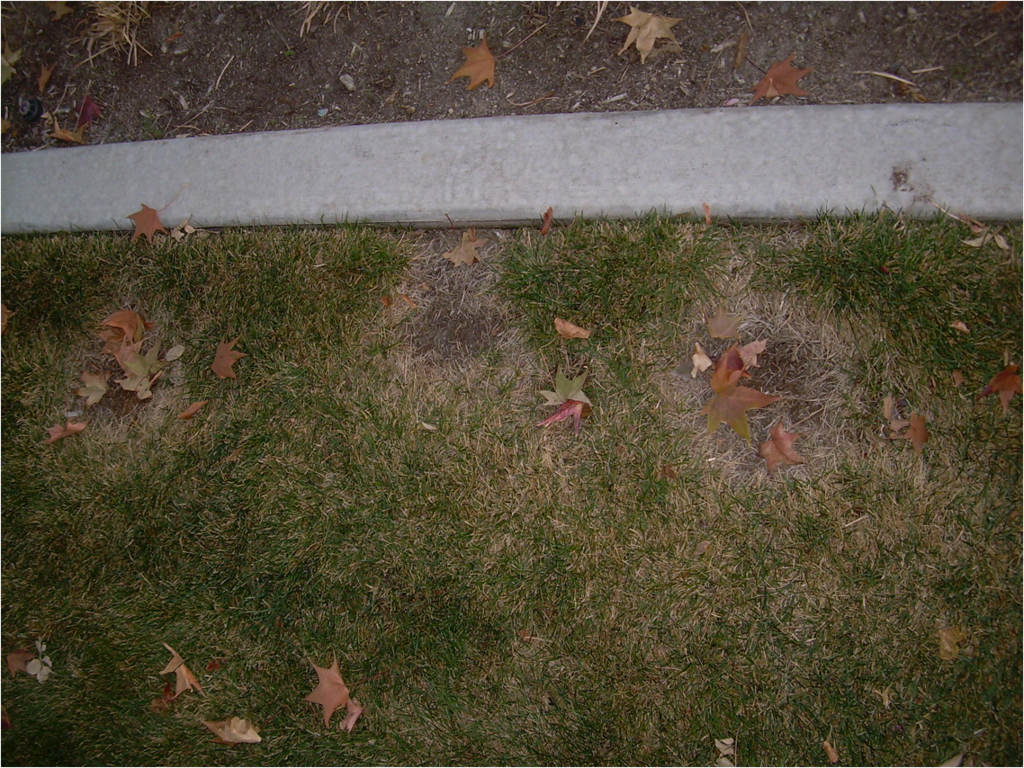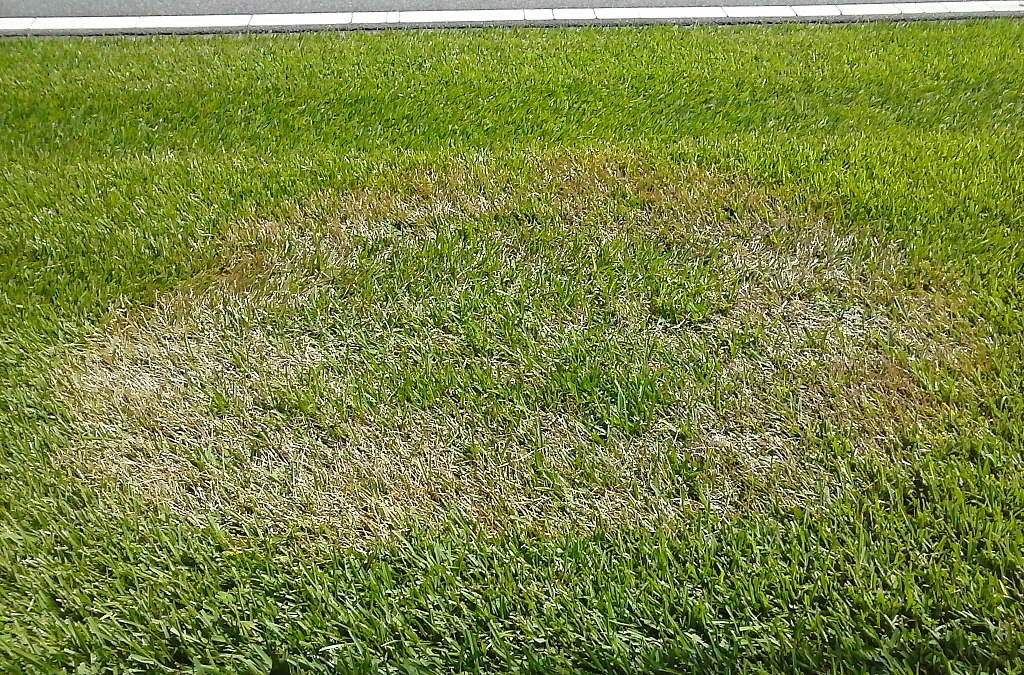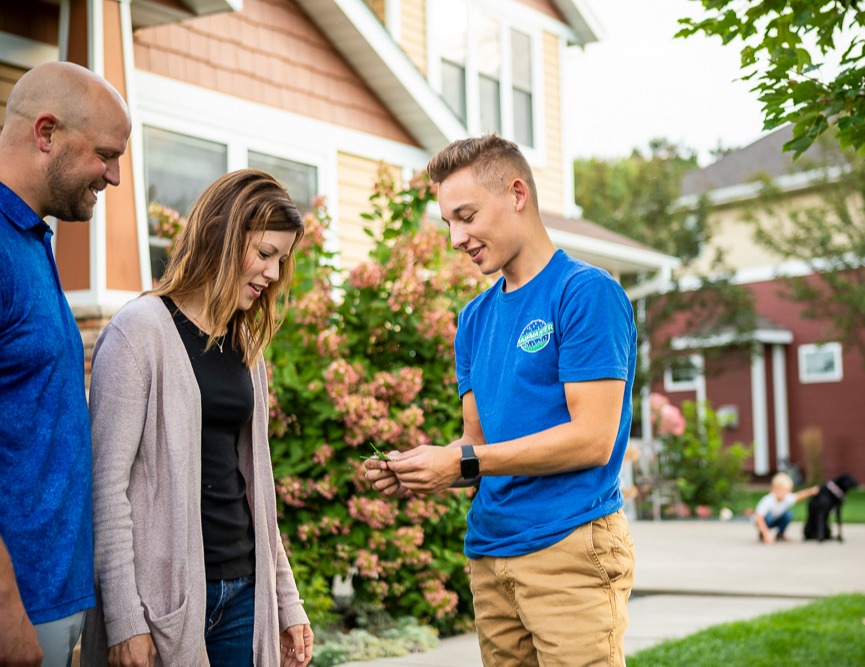Nobody ever says, “Let’s have some fun and talk about lawn diseases.”
The thing is, their names seem kind of fun: Red thread. Dollar spot. Fairy ring.
That’s where the fun ends.
Lawn diseases can strike fast, make your lawn look ugly, wipe out entire sections of grass, and they’re expensive to treat. (We told you the fun was over.)

What are the lawn diseases to look out for here in the upper Midwest?
Red thread. Dollar spot. Necrotic ring spot. Ascochyta leaf blight. Brown patch. Summer patch. Fairy ring. Rust. Snow mold.
There is some good news in all of this. Keep reading to learn more about:
- Red Thread
- Dollar Spot
- Necrotic Ring Spot
- Ascochyta Leaf Blight
- Brown Patch
- Summer Patch
- Fairy Ring
- Rust
- Snow Mold
Lawn Diseases: What Exactly Are They?
Lawn diseases are various kinds of fungi that mostly thrive in the high temperatures and high humidity of summer.
How to identify lawn diseases? Chances are, you’ll notice them.
One looks like pinkish-red threads in your lawn. Others show up as brown or bleached-looking patches.
Here are the most common lawn diseases in the upper Midwest and some tips on how to prevent them.
1. Red Thread
How can you identify Red Thread (Laetisaria fuciformis)? This one makes it pretty easy. It looks like red threads in your lawn.
You’ll see circular patches in tan, pink, or red, ranging in size from a few inches to two feet in diameter.

Red tendrils will protrude from affected leaf blades — the “red threads” that give the disease its name.
Red Thread doesn’t affect the roots of your grass, so your lawn will recover.
Red Thread lawn fungus is a summer lawn disease that thrives in summer's high temperatures and humidity. When conditions are right, Red Thread can strike fast.
Treating Red Thread can be expensive. A fungicide application can cost several hundred dollars and typically takes more than one application.
The good news is that Red Thread lawn fungus often clears up itself if you’re patient. And the grass typically comes back on its own after the fungus disappears.
2. Dollar Spot
Dollar Spot thrives in high humidity and lawns that lack nitrogen. You’ll notice bleached patches ranging from a few inches to a foot in diameter.

Applying nitrogen can help your lawn recover.
3. Necrotic Ring Spot
Necrotic Ring Spot summer lawn fungus loves cool and wet conditions, followed by heat and drought.
Is your lawn compacted and in need of aeration? Necrotic Ring Spot loves that.

You’ll see circular straw-colored patches, usually less than 12 inches across.
It’s most common in newly sodded lawns, but it will hang out in seeded lawns, too.
Battle Necrotic Ring Spot with aeration. You want to reduce compaction and improve your lawn’s drainage. Also, keep on top of your fertilizer.
4. Ascochyta Leaf Blight
High temperatures and humidity can cause this summer lawn fungus to set in.
Ascochyta Leaf Blight causes large irregular patches of turf to quickly turn straw-brown in color and appear dead.

Its claim to fame: it can appear suddenly, even overnight.
To manage this lawn fungus, reduce thatch with core aeration at least once a year for better water penetration.
Keep your grass height between 2.5 and 3 inches, and avoid mowing during wet weather.
Your turf may look dead from a distance, but this summer lawn fungus doesn’t affect your turf’s crowns or roots. So, your grass should recover in two to three weeks, depending on weather conditions.
5. Brown Patch
This summer lawn fungus occurs in Minnesota and Wisconsin mid- to late-summer when the weather is hot and humid.

Brown Patch lawn disease appears as irregular circular patches in the lawn that are brownish-yellow and range from six inches to several feet in diameter.
Your lawn is susceptible to Brown Patch if you water too much, add too much nitrogen, have poor soil drainage, compacted soil, or too much thatch.
To avoid Brown Patch, don’t overfertilize or overwater, water early in the day so your lawn has time to dry fully before evening, and aerate and dethatch your lawn every year.
6. Summer Patch
This one doesn’t sound too bad, right? Don’t let it fool you.
How can you identify Summer Patch lawn disease? Summer Patch appears as ugly patches of dead turf and rotted lawn roots.
Summer Patch lawn fungus is ugly and destructive, showing up in the heat of summer — just when you want to enjoy your yard.
You might first see small circular patches of wilted, thin lawn. Then those patches typically get bigger and turn into irregular, yellow-to-bronze colored areas ranging from six inches to 3 feet in diameter. Suddenly, you have big areas of blighted turf.

Summer Patch lawn fungus especially loves compacted, poorly drained areas during hot, wet weather. It also tends to attack short grass — just one of many reasons not to mow your grass too short. (More on that in a bit.)
This root-destroying lawn fungus looks similar to other summer lawn diseases, like Dollar Spot and Necrotic Ring Spot, but Summer Patch is even worse for your lawn because it kills not just the grass but also the roots.
If you’re unsure if it’s Summer Patch disease, pull up a tuft of grass and examine the roots. Roots infected with Summer Patch are dark brown or black and short, while healthy grass roots are lighter in color and longer.
Rotting roots means you’ll have to reseed your lawn.
Summer Patch disease is a tough lawn fungus since it destroys your lawn’s roots.
RainMaster lawn pros use high-quality fungicides to tackle this lawn disease, but we recommend other control methods first. (Keep reading—we’ll get to those in a minute.)
7. Fairy Ring
While Necrotic Ring Spot shows up as circular straw-colored patches usually less than 12 inches across, fairy rings in your grass are usually much bigger, ranging in diameter from three feet to as large as 20 feet.

How to identify this lawn disease? Fairy Ring has a distinctly different color or texture than the grass inside or outside of the ring. Look for rings of grass that are denser, greener, and faster growing, or possibly browner and drier than the surrounding grass.
During wet weather, rings of mushrooms can form at the edge of the discolored grass.
Fertilizing your lawn well in the fall and spring helps ensure its health and a better chance of surviving this summer lawn fungus.
8. Rust
Rust appears as a powdery substance that's usually orange or rusty in color. It can appear as spots or completely cover a grass blade.
This lawn fungus usually shows up mid-summer through late fall, once grass growth has slowed.
%20CC.jpg?width=5184&height=3456&name=Lawn%20Rust%20(puccinia)%20CC.jpg)
Rust usually takes hold in shaded areas first, during warm, humid weather. If your grass stays wet for too long, either because of overwatering or poor drainage, it could become infected with rust.
Lawn Rust typically strikes Kentucky Bluegrass and Perennial Ryegrass — two common turf types in Wisconsin and Minnesota.
9. Snow Mold
Snow Mold is probably the mildest of the lawn diseases. It’s a type of lawn fungus that affects grass in areas of the country that get a lot of snow in the winter — like we usually do.

Grayish-white patches in the lawn often show up when the snow melts (these may also appear as pink patches in the lawn, depending on the fungus causing the issue).
After the lawn has dried out after the melt, use a leaf rake to fluff up the matted areas. The moldy areas should disappear almost immediately. Apply some fertilizer to encourage new growth.
Treating Lawn Diseases
Treating lawn diseases isn’t cheap.
It can cost several hundred dollars for an application of fungicide and typically takes more than one application.
The good news is, lawn fungus often clears up itself if you’re patient. And the grass typically comes back on its own after the fungus disappears.
If you have the same lawn fungus issue yearly, we can help prevent it with a fungus control product.

But typically, we treat these summer lawn diseases when they pop up.
Be patient. It can take a month or longer to see results. It always takes multiple treatments.
Sometimes, your lawn will need extra attention after lawn diseases.
With Necrotic Ring Spot, it’s common to need aeration, overseeding, and pH treatment to restore your lawn to its healthy condition.
Environmental conditions cause each of these summer lawn problems in the upper Midwest, so fixing those conditions is key to banishing the fungus.
The other good news is that you can do a few things to prevent lawn fungus, such as proper mowing, watering and fertilizing.
Some Tips for Preventing Lawn Diseases
A healthy lawn is better equipped for trauma like lawn diseases.
- Fertilize your lawn in the fall and spring to keep it healthy and to give it a better chance of surviving lawn fungus.
- Aeration, aeration, aeration. You want to reduce compaction, reduce thatch, and improve your lawn’s drainage.
- Don’t water too often — you don’t want your lawn too wet.
- Water less frequently but for longer. When the roots have to dive deeper for moisture, your lawn develops a stronger, healthier root system.
- Water early in the day, before sunrise, so your lawn can fully dry before evening.
- Mow tall. You’ve heard it here before, and for good reason. Keep your grass height between 3 and 5 inches, and avoid mowing during wet weather. Mowing too short is like a welcome mat for lawn fungus. It weakens the grass and makes it more vulnerable to diseases.
Frustrated by Lawn Diseases? Call RainMaster
Nobody wants to look at the lawn and see stringy red threads, big bleached circles, brown patches, or dead lawns.
Summer lawn diseases attack your lawn when you want to enjoy your yard the most.
Keep lawn fungus from creeping in by setting up your lawn for success with a proactive lawn care program that includes a custom nutrition plan and aeration.

The roots will be nourished, the soil packed with nutrients and able to drain better, and your lawn thick and healthy, so lawn diseases will have a harder time taking hold.
Also, consider a regular irrigation maintenance program to ensure your sprinkler system delivers the right amount of water at the right time so you're not encouraging lawn fungus.
Want to be confident about your choice of lawn care services in Eau Claire, WI or Minneapolis? Request a quote today! We’ll review your lawn care options together so you can make a great choice. Then, you can finally enjoy your lawn and stop worrying about it.
Image Sources | Red Thread, Dollar Spot, Necrotic Ring Spot, Brown Patch, Summer Patch, Fairy Ring, Lawn Rust, Snow Mold


